Idrw Team
SOURCE: IDRW.ORG


The Indian Army’s formidable T-90 ‘Bhishma’ tanks, a mainstay of its armored divisions, have received a game-changing upgrade that allows them to operate underwater for up to an hour. The Defence Research and Development Organisation (DRDO) has developed advanced equipment to keep tank crews operational even when fully submerged, significantly enhancing the tanks’ ability to navigate rivers along India’s borders with Pakistan and China.
With over 1,100 Russian-made T-90 tanks in active service, these main battle tanks form the backbone of India’s armored forces. The country’s riverine terrain, particularly along its northern and western borders, poses a challenge for tank operations during military maneuvers. While the T-90 is designed to withstand water exposure, the primary concern has been the safety and functionality of the crew—typically four to five members—when submerged.
Continue readingSOURCE: IDRW.ORG


In a significant stride for India’s aerospace and defense sector, Flying Wedge Defence & Aerospace has showcased a cutting-edge prototype of an Unmanned Combat Aerial Vehicle (UCAV) at a recent event. Dubbed the “Autonomous Aerial Aircraft,” this prototype bears a striking resemblance to SR-UAV (Surveillance and Reconnaissance Unmanned Aerial Vehicle) class systems, signaling a promising advancement in indigenous defense technology.
The unveiling took place at an exhibition aligned with the “Make in India” initiative, in collaboration with Suhas Tejaskanda, as indicated by the event branding. The prototype was displayed at Flying Wedge’s facility located at Bengaluru, Karnataka . The sleek, stealth-inspired design of the UCAV, with its angular lines and matte black finish, suggests a focus on low-observability and high maneuverability—key traits for modern combat drones.
Continue readingSOURCE: IDRW.ORG


India’s ambitious push for self-reliance in unmanned aerial systems (UAS) is facing significant hurdles at the Aeronautical Test Range (ATR) near Chitradurga, Karnataka, as reported by aerospace journalist Anantha Krishnan M. Multiple UAV developers, both from government agencies and private industry, have voiced concerns over persistent delays caused by mandatory clearances from the Airports Authority of India (AAI).
These bureaucratic bottlenecks are disrupting critical testing schedules, even as the ATR emerges as a vital hub for India’s UAV ecosystem, particularly following the strategic lessons from Operation Sindoor earlier this month. The issue underscores the urgent need for regulatory reform to support India’s growing defense innovation, especially as platforms like CSIR-NAL’s High-Altitude Platform (HAP) UAV show promising advancements.
Continue readingSOURCE: IDRW.ORG


The rapid evolution of modern warfare has transformed the battlefield, shifting from prolonged mobilizations to agile, asymmetric conflicts where intelligent, battle-ready systems dictate strategic outcomes. Operation Sindoor, launched by India in response to a Pakistan-backed terror attack in April 2025, exemplified this new paradigm, showcasing the Indian Armed Forces’ ability to respond swiftly and decisively.
Amidst this high-stakes conflict, Big Bang Boom Solutions (BBBS), a Chennai-based defense startup, emerged as a key contributor with its Vajra Sentinel Anti-Drone Defence System. In a recently released statement, BBBS detailed the journey of the Vajra Sentinel—from a concept in a 500-square-foot boardroom to a battle-tested system protecting India’s borders—highlighting its role in countering drone threats during the operation and underscoring the importance of indigenous defense innovation.
Continue readingSOURCE: IDRW.ORG
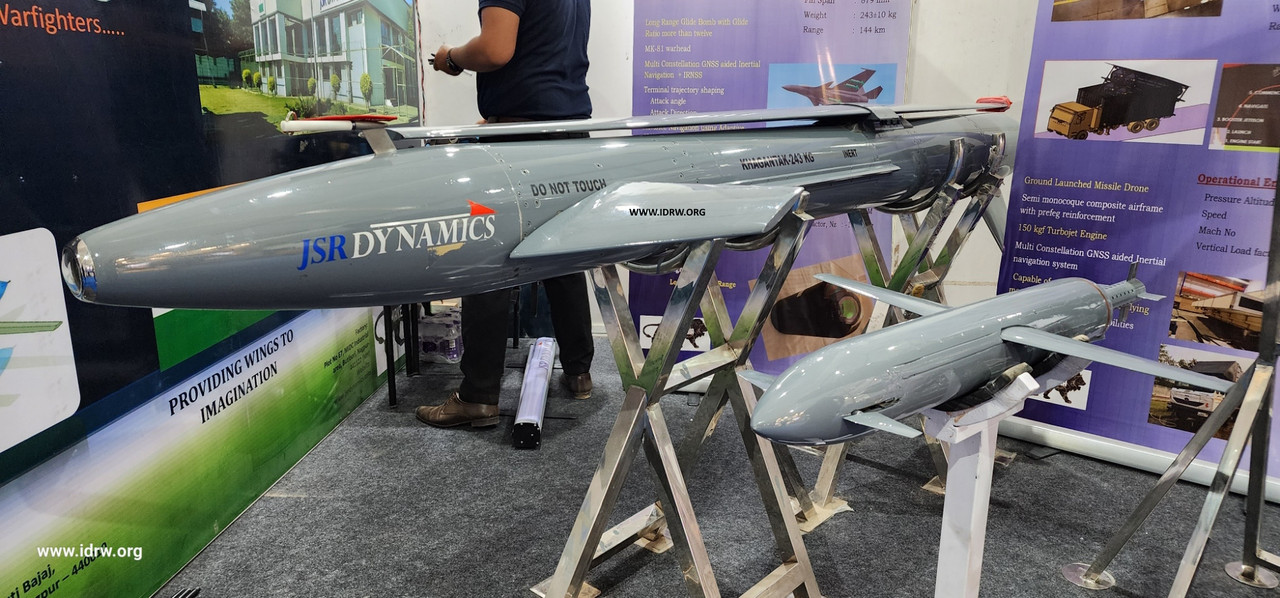

A significant revelation emerged from India’s defense circles: the Indian Armed Forces deployed the JSR Dynamics Khagantak missile—a 180 km strike range air-to-ground weapon—during the recent Indo-Pakistan clashes as part of Operation Sindoor (May 7–10, 2025). This marked the first combat deployment of the Khagantak, alongside other indigenous systems, which have now earned the coveted “battle-proven” distinction after their performance in live combat. The successful use of these homegrown technologies underscores India’s growing self-reliance in defense manufacturing and its ability to deliver decisive blows in modern warfare.
Developed by Nagpur-based JSR Dynamics, the Khagantak missile was first unveiled at Defexpo-2020 in Lucknow, where it was hailed as a major milestone for the Make in India initiative. The missile, designed for air-to-ground strikes, boasts a range of 180 km when launched from an altitude of 12 km. It features advanced aerodynamic performance and a seeker with artificial intelligence for target recognition, making it a highly precise guided weapon.
Continue readingSOURCE: IDRW.ORG


In a significant advancement for India’s defense capabilities, the Indian Army is set to induct the next-generation variant of the Low Level Lightweight Radar (LLLWR), a state-of-the-art, gallium nitride (GaN)-based Active Electronically Scanned Array (AESA) radar system. Impressed by the proven performance of the existing LLLWR, developed by the Defence Research and Development Organisation (DRDO) and manufactured by Bharat Electronics Limited (BEL), the Army’s decision to upgrade to this portable, high-performance radar underscores India’s commitment to enhancing battlefield situational awareness and self-reliance in defense technology.
Continue readingSOURCE: IDRW.ORG
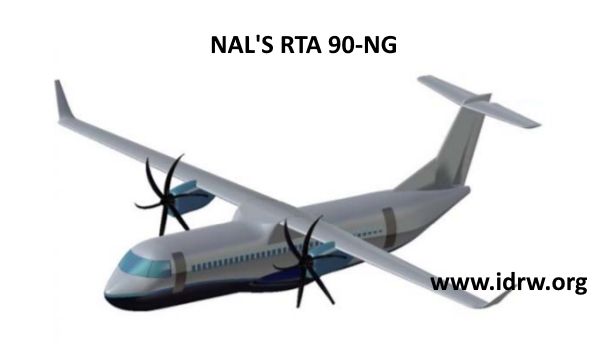

The recent strides made by Russia and China in developing their own civilian aircraft highlight a critical gap in India’s aviation strategy. As of April 17, 2025, India’s booming aviation sector, projected to need 2,200 new aircraft by 2040, remains heavily reliant on foreign giants Boeing and Airbus. This dependency mirrors the challenges faced by Russia and China, prompting both nations to pursue self-reliance in aircraft manufacturing.
For India, the need to develop its own Regional Transport Aircraft (RTA-90) in both turboprop and turbofan variants is urgent, not only to meet domestic short-haul flight demands but also to curb the market dominance of Western manufacturers.
Continue readingSOURCE: IDRW.ORG
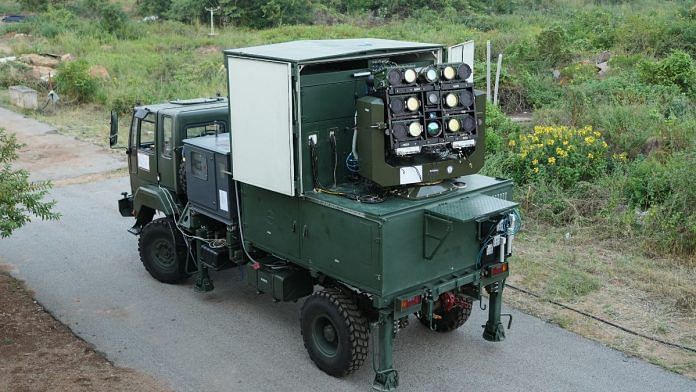

India’s Defence Research and Development Organisation (DRDO) has taken a significant step toward revolutionizing its defense capabilities by planning to transfer the technology of its indigenously developed Mk-II(A) 30-kilowatt (kW) Laser Directed Energy Weapon (DEW) to private sector companies. This move, announced following successful trials on April 13, 2025, at the National Open Air Range in Kurnool, Andhra Pradesh, aims to accelerate mass production to meet growing interest from the Indian Army for additional orders.
The decision aligns with India’s push for self-reliance in defense manufacturing and positions the country among an elite group of nations with advanced DEW capabilities. This article explores the Mk-II(A) DEW, the technology transfer plan, the Army’s interest, and the strategic implications for India’s defense ecosystem.
Continue readingSOURCE: IDRW.ORG
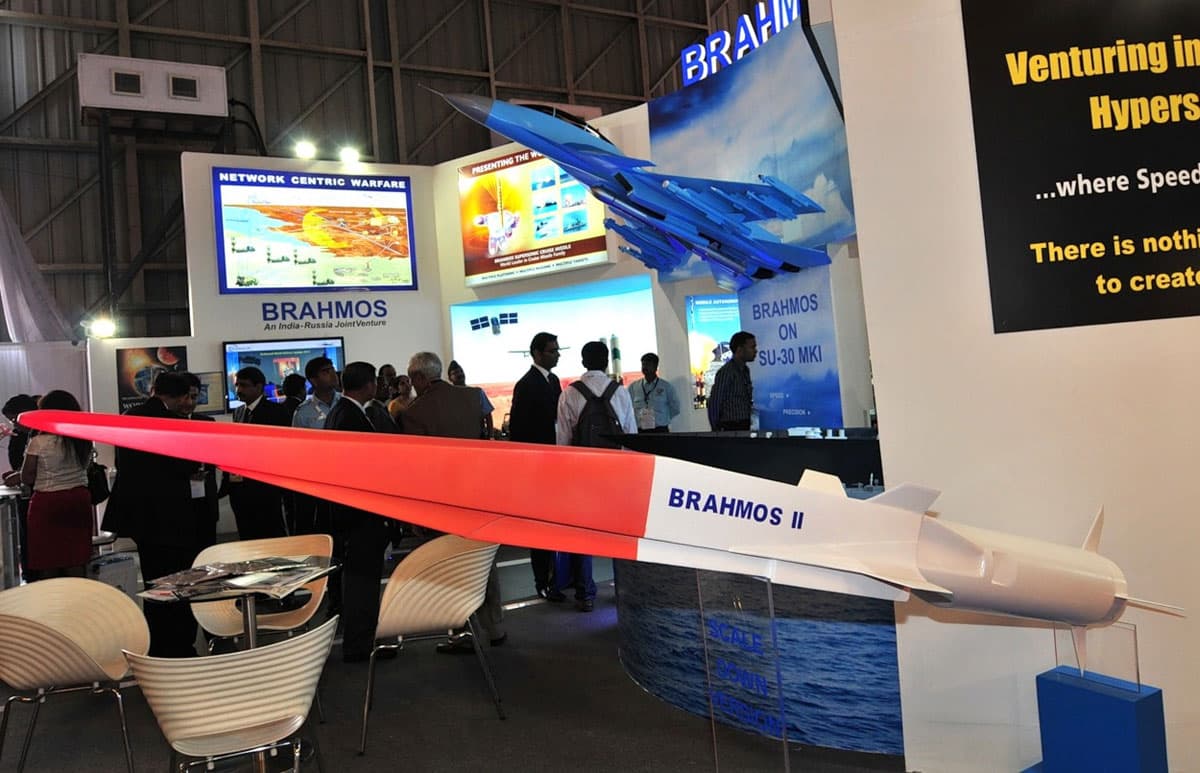

In a groundbreaking development for India’s defense capabilities, Dr. Sudhir Kumar Mishra, former Director General of the Defence Research and Development Organisation (DRDO) and former CEO & MD of BrahMos Aerospace, has hinted that the BrahMos-II hypersonic cruise missile will likely incorporate a cutting-edge scramjet engine developed indigenously by DRDO. This revelation follows DRDO’s recent successful ground test of a scramjet engine combustor, which ran for over 1,000 seconds on April 25, 2025, marking a significant milestone in India’s Hypersonic Cruise Missile Development Programme.
Speaking at the Powering Bharat Summit organized by Network18 on May 16, 2025, Dr. Mishra announced, “Two-three weeks back, we tested a hypersonic engine. Soon, we will come out with a hypersonic missile that will reach Mach 5 speed. All the technologies for BrahMos were developed in-house by DRDO, we even built the world’s largest launcher ourselves.” He emphasized the reliability and global competitiveness of India’s missile systems, noting that when other nations opt for Indian systems like BrahMos, “it means ours is the best.” .
Continue readingSOURCE: IDRW.ORG


On May 16, 2025, Bharat Electronics Limited (BEL) and the Indian Army Air Defence signed a pivotal contract for the supply of the Integrated Drone Detection and Interdiction System (IDDIS), a state-of-the-art counter-drone solution indigenously developed by the Defence Research and Development Organisation (DRDO) and BEL. This agreement, valued as part of BEL’s ?572 crore in recent orders, marks a significant milestone in bolstering India’s defense capabilities under the Make in India and Atmanirbhar Bharat initiatives.
The IDDIS, designed to detect, track, and neutralize hostile drones, addresses the growing threat of unmanned aerial systems in modern warfare. Equipped with advanced radar, electro-optical/infrared (EO/IR) sensors, and radio frequency (RF) detectors, the system offers a detection range of 5–8 km. It employs both “soft kill” techniques, such as jamming RF and GNSS signals, and “hard kill” methods, including laser-based directed-energy weapons, to incapacitate rogue drones. The system’s proven effectiveness was demonstrated during Operation Sindoor on May 7, 2025, where it successfully destroyed several low-radar-cross-section (RCS) drones deployed by Pakistan, ensuring zero casualties and minimal material losses.
Continue readingSOURCE: IDRW.ORG
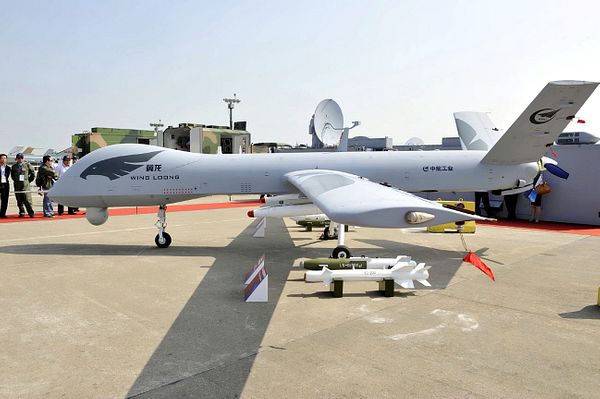

In a significant blow to Pakistan’s unmanned aerial capabilities, the Indian Air Force (IAF) destroyed a hangar housing multiple Chinese-made Wing Loong II Unmanned Combat Aerial Vehicles (UCAVs) at Pakistan Air Force (PAF) Base Sukkur in Sindh province during Operation Sindoor on May 7–10, 2025. Satellite imagery, corroborated by posts on X and reports from outlets like NDTV and India Today, confirms the complete collapse of the 54-meter hangar, a critical facility recently established with Chinese assistance. The strike, executed with precision using Rampage air-launched ballistic missiles (ALBMs) from IAF Jaguar Darin-II aircraft, has dealt a severe setback to Pakistan’s drone warfare capabilities, with at least one Wing Loong II confirmed lost.
Operation Sindoor was launched in response to a deadly terror attack in Pahalgam, Jammu and Kashmir, on April 22, 2025, which killed 26 civilians and was attributed to Pakistan-backed terrorist groups. The IAF targeted 11 PAF air bases, including Sukkur (also known as Bholari), to degrade Pakistan’s air and drone capabilities. Sukkur, a modern base inaugurated in 2017 under Pakistan’s Southern Air Command, is strategically located in Jamshoro district, Sindh, northeast of Karachi. It hosts advanced assets like F-16 Block-15 A/B and JF-17 Block-2 fighter jets, as well as SAAB 2000 Airborne Early Warning and Control (AEW&C) aircraft. Crucially, it serves as a hub for Pakistan’s growing fleet of UCAVs, including the Wing Loong II.
Continue readingSOURCE: IDRW.ORG


India’s indigenous Drone Detect, Deter, and Destroy system (D4S), developed by the Defence Research and Development Organisation (DRDO) and manufactured by Bharat Electronics Limited (BEL), has emerged as a game-changer in modern warfare. The system’s recent success in neutralizing Turkish-supplied drones during the India-Pakistan conflict has not only proven its combat effectiveness but also attracted significant international interest. According to a DRDO official speaking to idrw.org, inquiries from multiple countries have started pouring in for the D4 system, signaling India’s growing stature in defense technology.
The D4S, India’s first indigenously developed anti-drone system, offers 360-degree coverage, making it a formidable shield against aerial threats. Designed to counter rogue drones, including micro and small unmanned aerial vehicles (UAVs), the system has demonstrated its ability to detect, track, and neutralize threats in real time. It employs a dual-layered approach: a “soft kill” mechanism that disrupts drone communications through radio frequency (RF) jamming, Global Navigation Satellite System (GNSS) jamming, and GPS spoofing, and a “hard kill” option using laser-based directed energy weapons to physically destroy targets. The system also provides detailed optical and thermal imaging, alongside RF spectrum display on its graphical user interface, ensuring precise identification and engagement of threats.
Continue readingSOURCE: IDRW.ORG
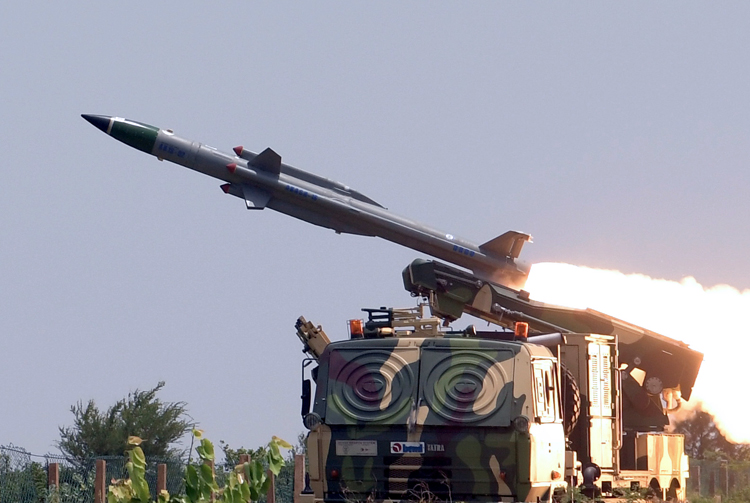

Retired Brigadier General Yücel Karauz, Türkiye’s former Military Attaché in Azerbaijan, commented on Armenia’s recent acquisition of the Indian-made Akash air defense system, highlighting its implications during a critical juncture in regional peace negotiations. While acknowledging the defensive nature of the Akash system, Karauz emphasized that its deployment sends a problematic signal amid sensitive talks aimed at stabilizing the South Caucasus region.
The Akash air defense system, developed by India’s Defence Research and Development Organisation (DRDO) and produced by Bharat Electronics Limited (BEL), is designed to protect a nation’s airspace by intercepting aerial threats. As Karauz noted, “The AKASH System is, of course, a defence system. Air defence is aimed at protecting the airspace. After all, it is not an offensive weapon system.” With a coverage area of up to 2,000 square kilometers, the system provides Armenia with a significant boost to its air defense capabilities, enabling it to counter potential attacks on its territory.
Continue readingSOURCE: IDRW.ORG


In a significant step toward bolstering India’s indigenous defense capabilities, Armoured Vehicles Nigam Limited (AVNL) and Bharat Electronics Limited (BEL) have signed a teaming agreement to jointly develop advanced electronic devices for wheeled armoured fighting vehicles (AFVs). The agreement, formalized on May 13, 2025, marks a deepening collaboration between two of India’s premier defense public sector undertakings (PSUs), aligning with the nation’s Atmanirbhar Bharat (self-reliant India) and Make in India initiatives. The signing ceremony took place in the presence of Shri Manoj Jain, Chairman and Managing Director (CMD) of BEL, Shri Sanjay Dwivedi, CMD of AVNL, Shri Satyabrata Mukherjee, Director (Operations) of AVNL, and senior officers from both organizations.
Wheeled AFVs, such as the Wheeled Armoured Platform (WhAP) developed by the Defence Research and Development Organisation (DRDO) and manufactured by Tata Advanced Systems, offer superior mobility, lower maintenance costs, and adaptability compared to tracked vehicles. These platforms are increasingly vital for rapid deployment in diverse terrains, from urban environments to border regions. The electronic devices targeted under this agreement are expected to include advanced fire control systems, sighting systems, communication modules, and potentially AI-driven situational awareness tools, enhancing the lethality and survivability of wheeled AFVs.
Continue readingSOURCE: IDRW.ORG


In a significant development for India’s defense sector, Bharat Electronics Limited (BEL), a leading Indian defense public sector undertaking, and Embraer S.A., the Brazilian aerospace giant, are exploring a collaboration to jointly work on future programs under Embraer’s military wing. This potential partnership aims to leverage BEL’s expertise in electronics and defense systems alongside Embraer’s advanced military aircraft platforms, marking a new chapter in Indo-Brazilian defense cooperation.
BEL, known for its capabilities in radar, avionics, electronic warfare systems, and communication equipment, is a key player in India’s defense ecosystem. Embraer, the world’s third-largest civil aircraft manufacturer and a significant name in military aviation, produces advanced platforms like the C-390 Millennium multi-mission transport aircraft and the A-29 Super Tucano light attack aircraft. The proposed collaboration seeks to combine BEL’s indigenous technological strengths with Embraer’s globally recognized aerospace expertise to co-develop and integrate cutting-edge solutions for military programs.
Continue reading